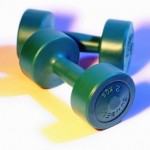 Are you looking for an easy, healthy and fresh meal to prepare this weekend? Here’s your no-fuss, full of flavor and nutrients, easy-prep meal solution!
Are you looking for an easy, healthy and fresh meal to prepare this weekend? Here’s your no-fuss, full of flavor and nutrients, easy-prep meal solution!
Watermelon Gazpacho Recipe
8 cups finely diced seedless watermelon, (about 6 pounds with the rind) (see Tips
18 large shrimp deveined and shelled (3 shrimp/serving)
1 medium cucumber, peeled, seeded and finely diced
1/2 red bell pepper, finely diced
1/4 cup chopped fresh basil
1/4 cup chopped flat-leaf parsley
1/2 cup crumbled feta
3 tablespoons red-wine vinegar
2 tablespoons minced shallot
2 tablespoons extra-virgin olive oil
3/4 teaspoon salt
Preparation:
Mix watermelon, cucumber, bell pepper, basil, parsley, vinegar, shallot, oil and salt in a large bowl. Puree entire mixture in a blender or food processor to the desired smoothness; transfer to another large bowl and place in refrigerator. Lightly toss shrimp with olive oil, salt and pepper and place on the grill. Once cooked add to soup with 1 Tbsp crumbled feta on top. Serve at room temperature or chilled.
Tip:
Can be made ahead of time and kept in refrigerator covered for up to 1 day.
Recipe courtesy of Samantha Lynch MS RD. Samantha Lynch is a registered dietician who caters to everyone from athletes and celebrities to students and stay-at-home moms. Based in Manhattan, she holds a Master’s Degree in Clinical Nutrition from New York University. After graduating in 2009, she started her own nutrition counseling practice to fulfill her dream of helping people live longer, happier and more energetic lives. www.SamanthaLynchNutrition.com
 Subscribe
Subscribe







